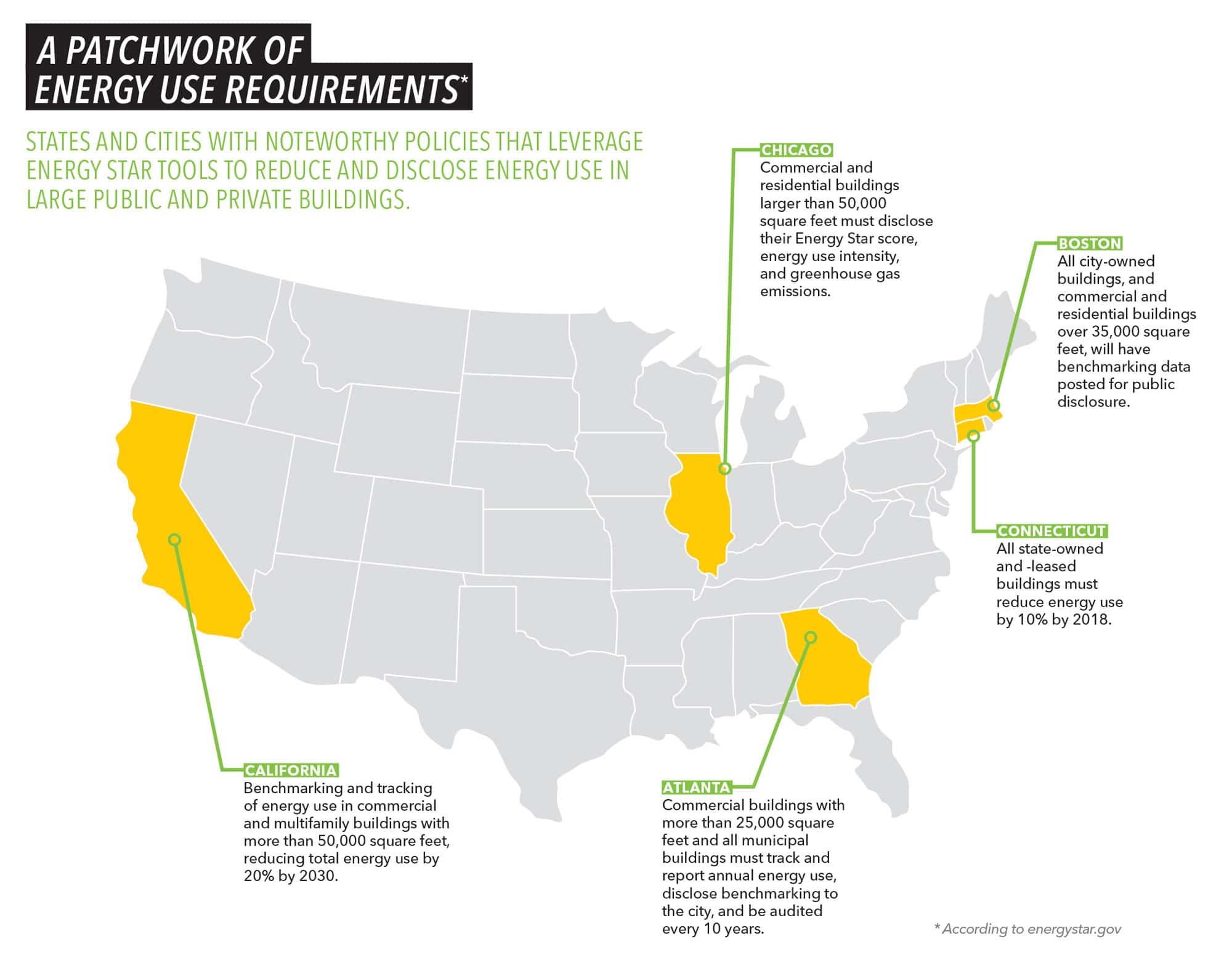
[Photo: Christopher Free]
There’s more than one way to cut energy costs for big businesses. Option One Energy and Green Scope Solutions help you tackle the issues from all sides.
 Download a PDF of this story.
Download a PDF of this story.
To learn more, visit Option One Energy
It looks so simple. A hotel in Laguna Beach, California cut energy costs by $275,000 by switching to LED lighting and controls. A hotel-condo building in New York City saved more than $175,000 in its first year with similar retrofits. And a restaurant franchise with 50 locations lowered its energy spend by more than 30%—in addition to reducing its overall lighting demand by 70%. To top it all off, all of these examples experienced paybacks within 15 months.
Achieving the most strategic reductions in energy use and utility costs is not a simple matter of changing light bulbs, though. Success stories like these take a comprehensive approach with qualified experts to pull many interrelated physical and contractual pieces together.
The savings to each of these companies, and the environment, are significant to say the least. And they’re wholly possible: The tools, technologies, and tactics—and certified professionals to do the analysis—are widely available. What can be accomplished today eclipses what was possible even just a few years ago. So why isn’t every business taking these steps toward energy efficiency and cost reductions?
4 Things to Consider When Hiring an Energy Consultant
Going to work with an energy consultant isn’t a simple matter of outsourcing. Who you work with, their experience, and their credentials matter. But you have to be clear about your organization’s commitment and involvement as well.
Look for a certification.
A Certified Energy Manager, or CEM, like Morris is globally recognized, including by the Better Buildings Workforce Guidelines developed by the U.S. Department of Energy. It ensures consistent standards, quality, and a scalable plan.
Submit to benchmarking.
It’s important to avoid “analysis paralysis,” but establishing the before-and-after numbers provides valuable information for the future, such as when the organization grows into new and additional facilities.
Factor for people.
Greatest efficiencies happen when all facilities and facility managers are included in planning and execution, as well as employees and other building occupants. According to Morris, “Behavior modification can be one of the most important ways to cut energy use.”
Consider your timeframe.
In an energy retrofit, there will be upfront investment before cost savings pays for it. Fortunately, the ROI on as large a job as replacing 10,000 light bulbs with hyper-efficient LEDs can be as short as
12 months.
The Challenges
Optimizing building energy efficiencies—physical usage and contractual pricing—comes with myriad challenges. The knowledge required for a rationalized energy program is beyond what procurement generalists typically are able to muster.
“A total energy management plan is imperative for businesses today,” says Adam Morris, principal at Option One Energy (OOE), a leading Chicago-based consultancy that works with businesses to save money through a broad range of energy management services as well as renewable green options and natural gas and electric procurement. Together with its sister company, Green Scope Solutions (GSS), which works on the demand side—including retrofitting lighting systems, building automation, and a number of other demand solutions—OOE takes a holistic approach to managing energy.

[Infographic: Kristina Walton Zapata]
As Morris says, “the devil is in the details.” He explains how smart energy plans account for the complexity of a multi-location organization, where you’ll often encounter different building characteristics, municipal codes and tariffs, rebate or tax structures, and oftentimes multiple energy providers with their own pricing schedules that can fluctuate by the hour. The skill sets for both lowering consumption and optimizing sourcing require someone with a background in energy management who understands both the supply and demand side of energy.
Achieving Your Goals
Consider the case of a restaurant franchise. As with any business, budget certainty is a goal along with overall cost reduction. It also doesn’t hurt for a consumer-facing enterprise to acquire a green story, all while ensuring customer safety and aesthetics. Layer on 50 locations and the ebbs and flows of business (add a location here, close one there) and you have other variables to consider, like different utility providers and boundaries.
A cohesive plan might have been elusive if approached solely with internal staff. Better to consult with experts who provide both knowledge and objectivity to the task (see tips, pg. 23). This is precisely what energy professionals like Morris and Brian Mavraganes, partners at both OOE and GSS, do.
Morris’s team works from the energy management and supply procurement side, looking at how energy is sourced and managed going forward. Mavraganes is an expert in demand solutions—lighting, controls, and looking at how to identify and implement changes that reduce demand.
Morris and Mavraganes liken the process to going to the right kind of doctor. When your foot hurts, for example, you see a podiatrist. What’s causing pain in your foot may be due to an issue with your hips or even an inactive muscle, but you have to look at the body as a whole to find the solution. Similarly, in the world of energy, you need someone who’s experienced in all areas of energy management—i.e. a certified energy manager—to find the best solution. “Energy can be extremely complex, just like the human body,” Morris says.

[Photo: Courtesy of Option One Energy]
Just as physical health involves all kinds of metrics, total energy management does, too. Morris quotes management guru Peter Drucker—“If you can’t measure it, you can’t improve it”—to emphasize the importance of setting benchmarks and assessing results data. “At the end of the day, most owners and facility managers want to see the results,” he says.
The Solution
The firm offers bill management technology for storing bills and data (power, natural gas, water, and waste)—all imperative for compliance needs, benchmarking, Energy Star, and LEED tracking. All help to tell a comprehensive energy story of a business. They also look at external factors and policies that could hurt or help your organization and assist in accessing rebates, incentives, and credits. “Offsetting costs can make a good project great, and who doesn’t want a quick payback?” Morris says.
Lighting systems are the lowest hanging and largest fruit on the consumption end. According to the U.S. Energy Information Administration, a division of the U.S. Department of Energy, lighting is the single largest end-use consumer of electricity in all building types in the country (followed by ventilation, refrigeration, cooling, and computing). While this varies by sector, lighting is the largest use of electric power in retail, warehouse and storage, and office settings, and only second to ventilation in lodging and to cooling in educational facilities.
But in commercial settings, the perspectives of tenants and owners are different. “We get the building owner involved, even though the tenant is responsible for energy costs,” Mavraganes says. “They both benefit from a better system—the tenant gets reduced costs and the building owner can get tax credits.”
Those tax credits, however, are unevenly available by municipality and state. A quick perusal of energystar.gov shows how cities, counties, and states have varying policies and ordinances for energy benchmarks, usage disclosures, and other factors. Option One Energy combs through those to find ways to optimize procurement scenarios within each.
So while those hotels and restaurants—and any other large commercial building owner or tenant—can see the results of an efficient lighting program (including the spectrum of design options provided by LED technologies), it’s the bean counters in the back offices who see significant financial benefits of procurement optimization, over and above energy cost reductions. For them, going green can turn red ink on a P&L statement into black.
The Green Savings Team

[Photo: Christopher Free]
Option One Energy and Green Scope Solutions began working together and are practically a single company for an important reason: The rational approach to energy expenditures involves both the demand and supply sides and a total energy management approach. OOE finds the best ways to manage and procure power—electricity and gas—in energy markets across the U.S. GSS analyzes, designs, and implements physical changes that can reduce consumption overall.
The process for developing a smarter energy program includes an active management approach. “Not making energy management a priority is the root cause in most companies,” Morris says. From there, he and Mavraganes walk the client through data collection, bid facilitation, supplier offers, and contract negotiations with ongoing support and management after implementation. In the case of a 160-unit hotel chain, Mavraganes’s team set standards that all on-site staff now follow. “We made re-ordering dummy-proof,” he says.
Why have so many companies yet to undergo this process? “They don’t realize their losses—the delta between what they are actually doing and what they are capable of doing,” Morris says.
Read more about Option One Energy here.
